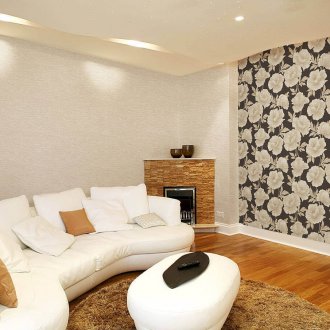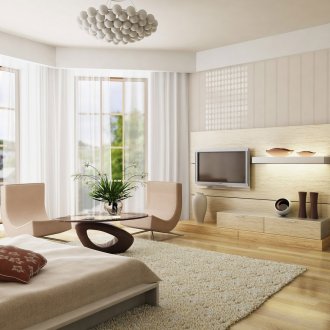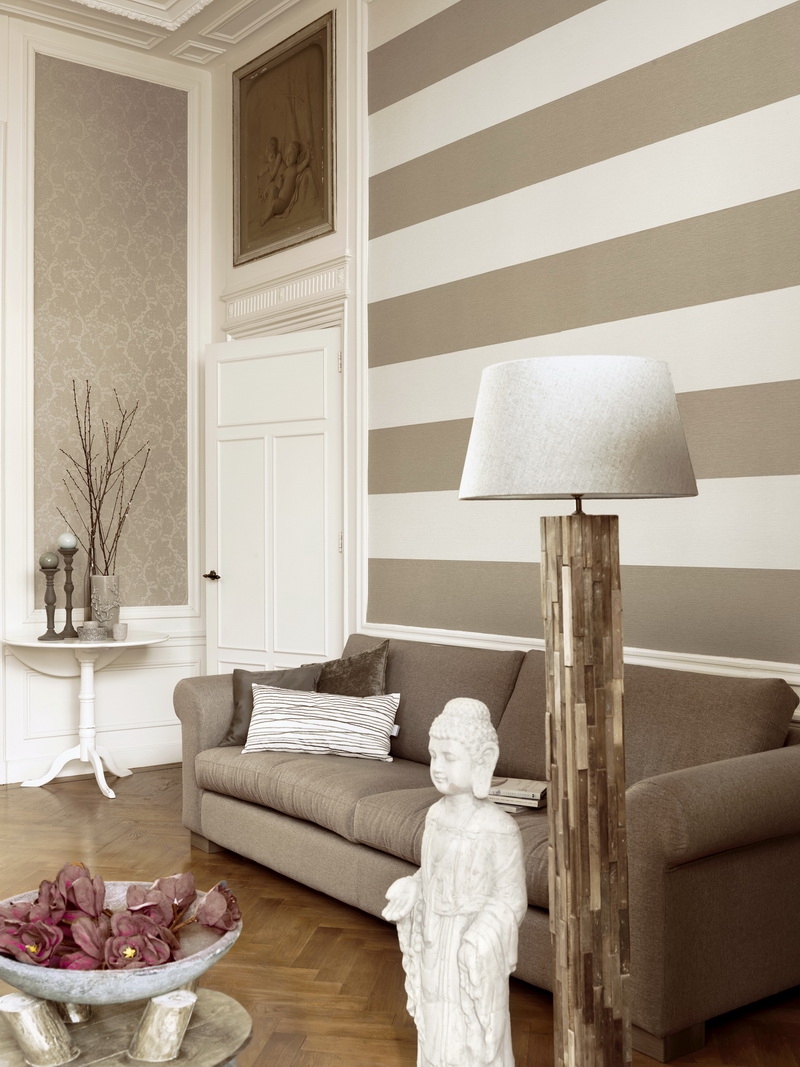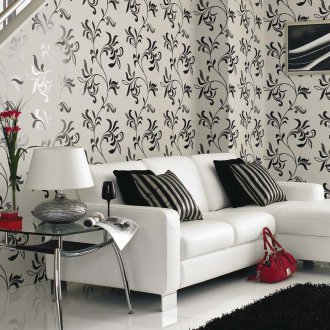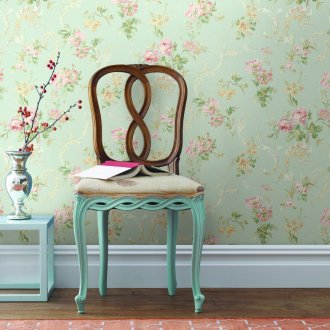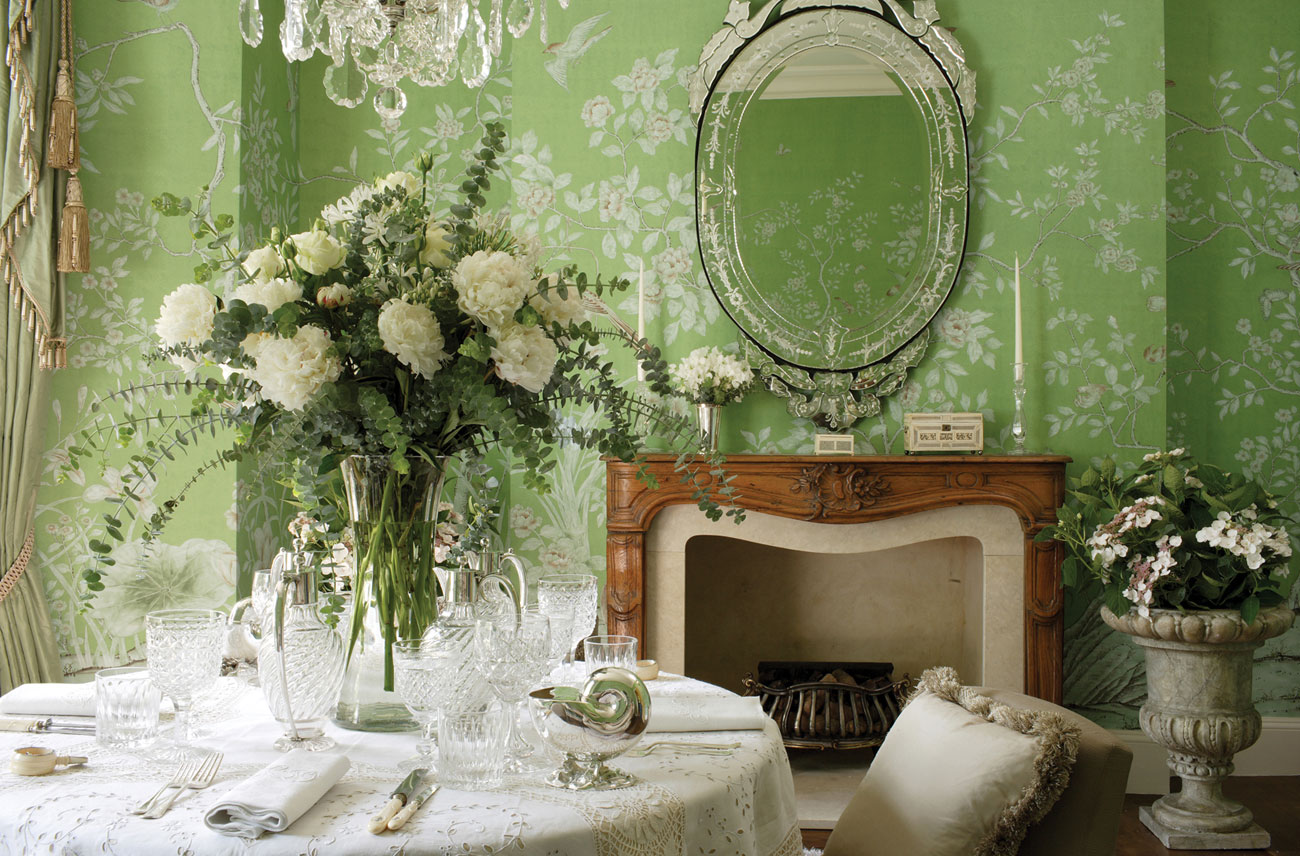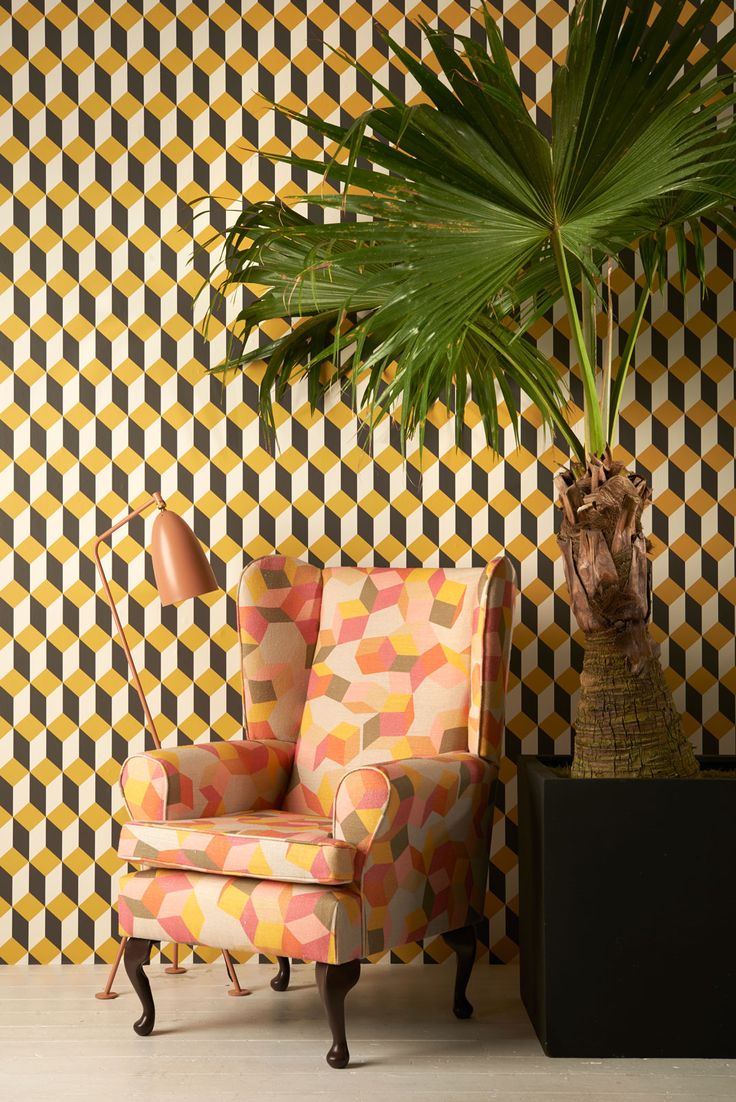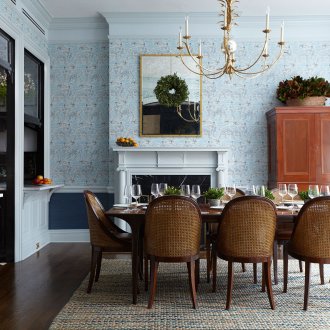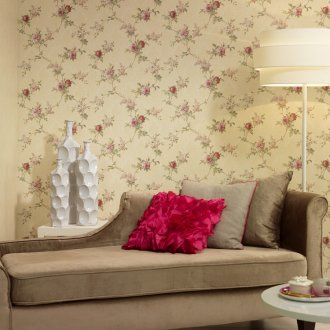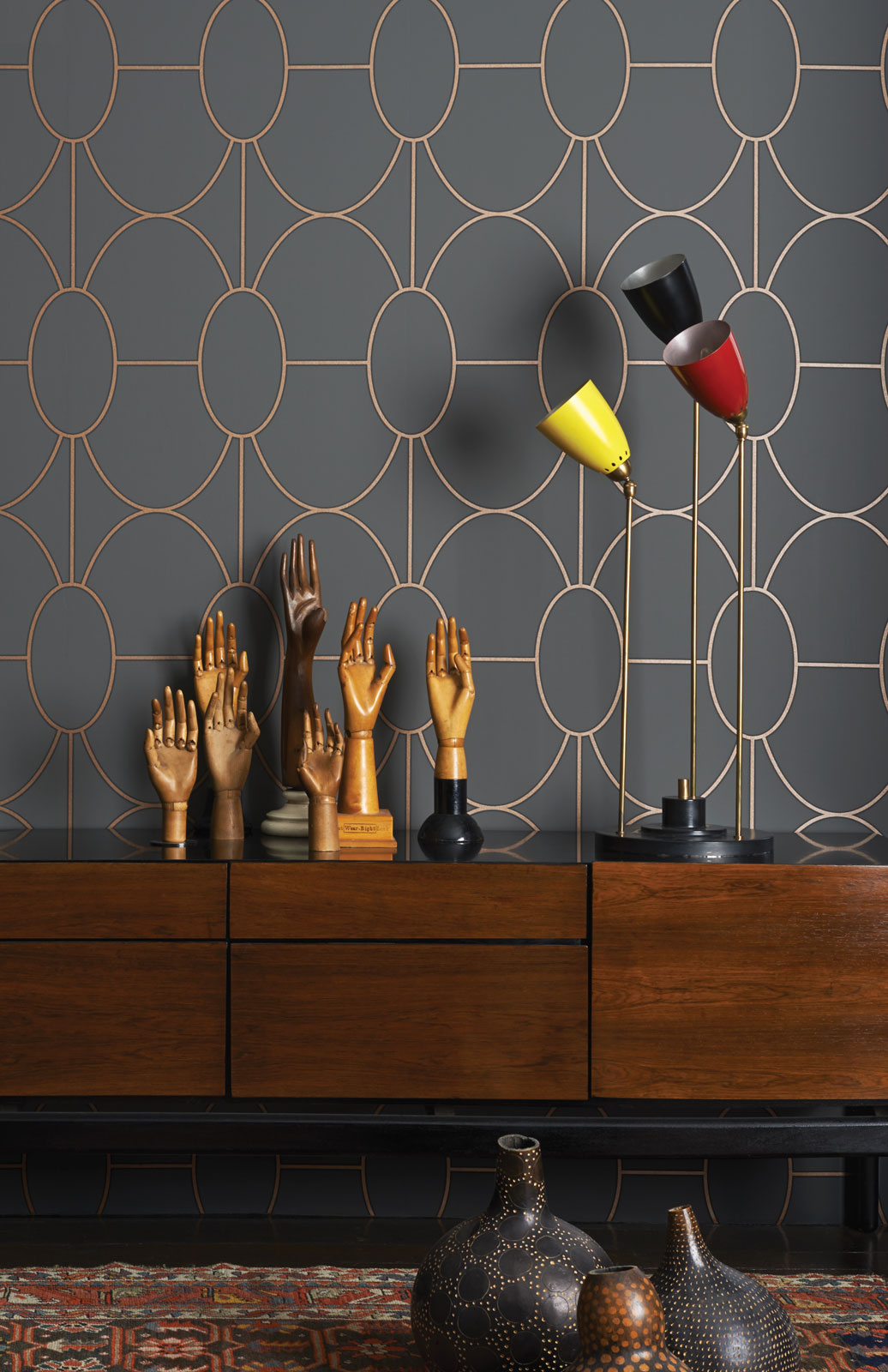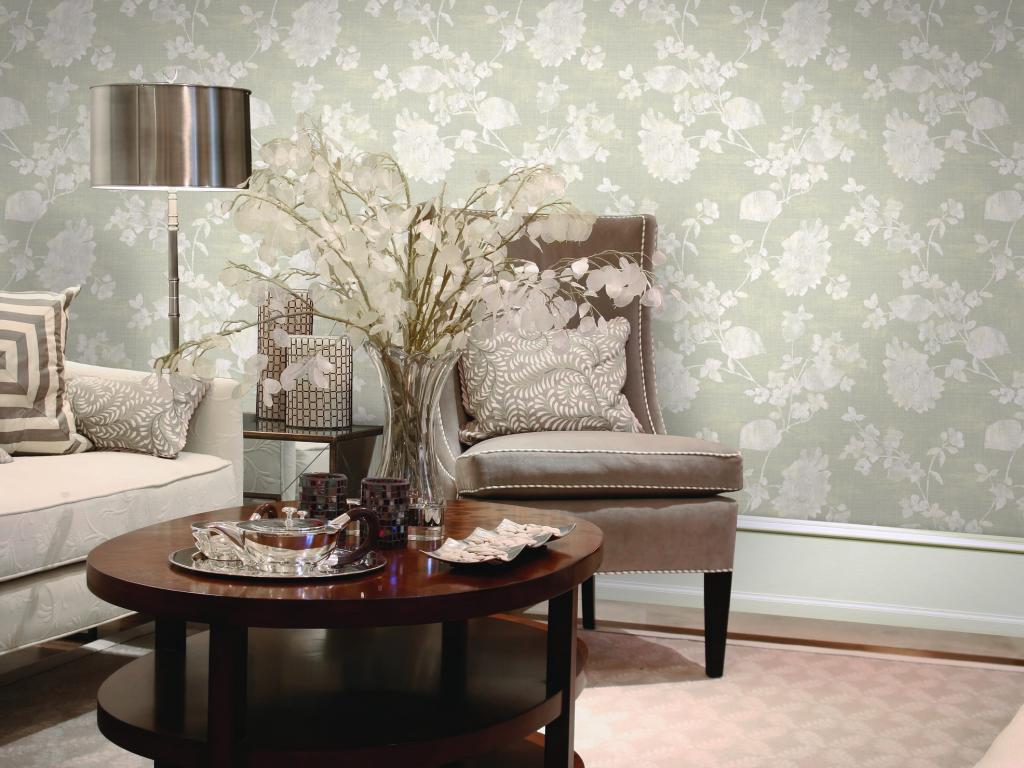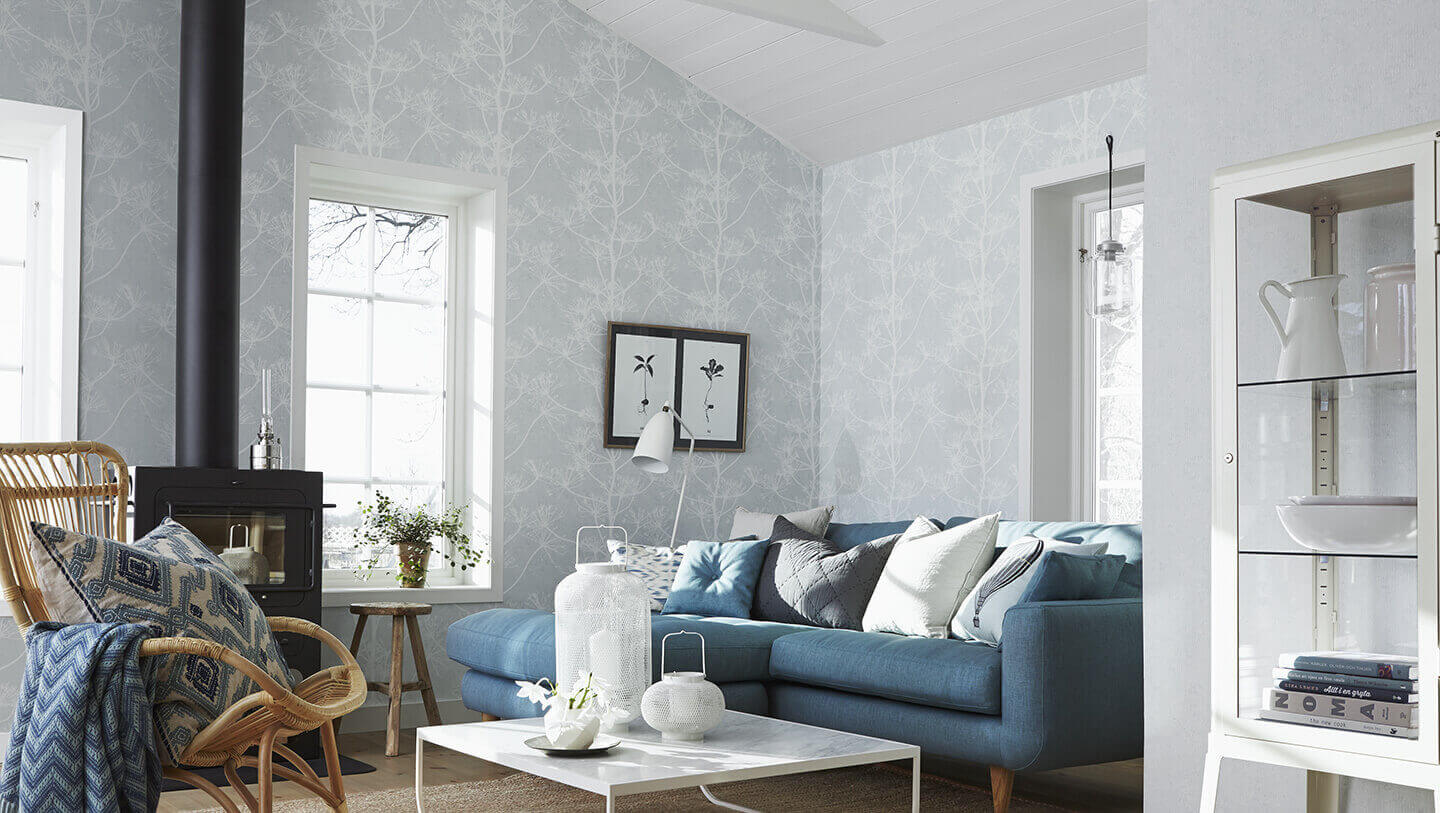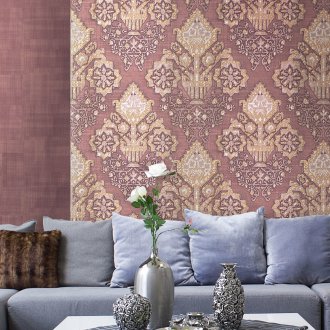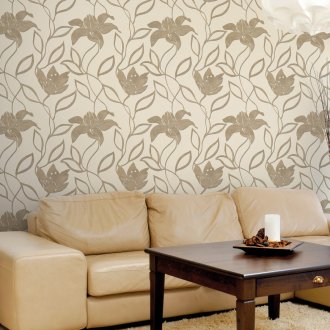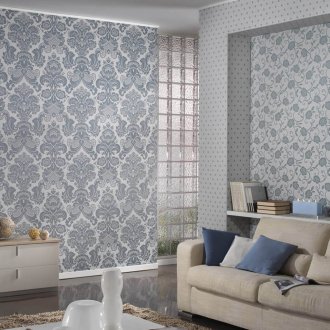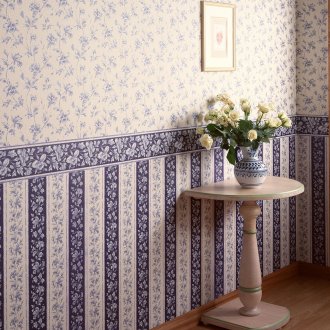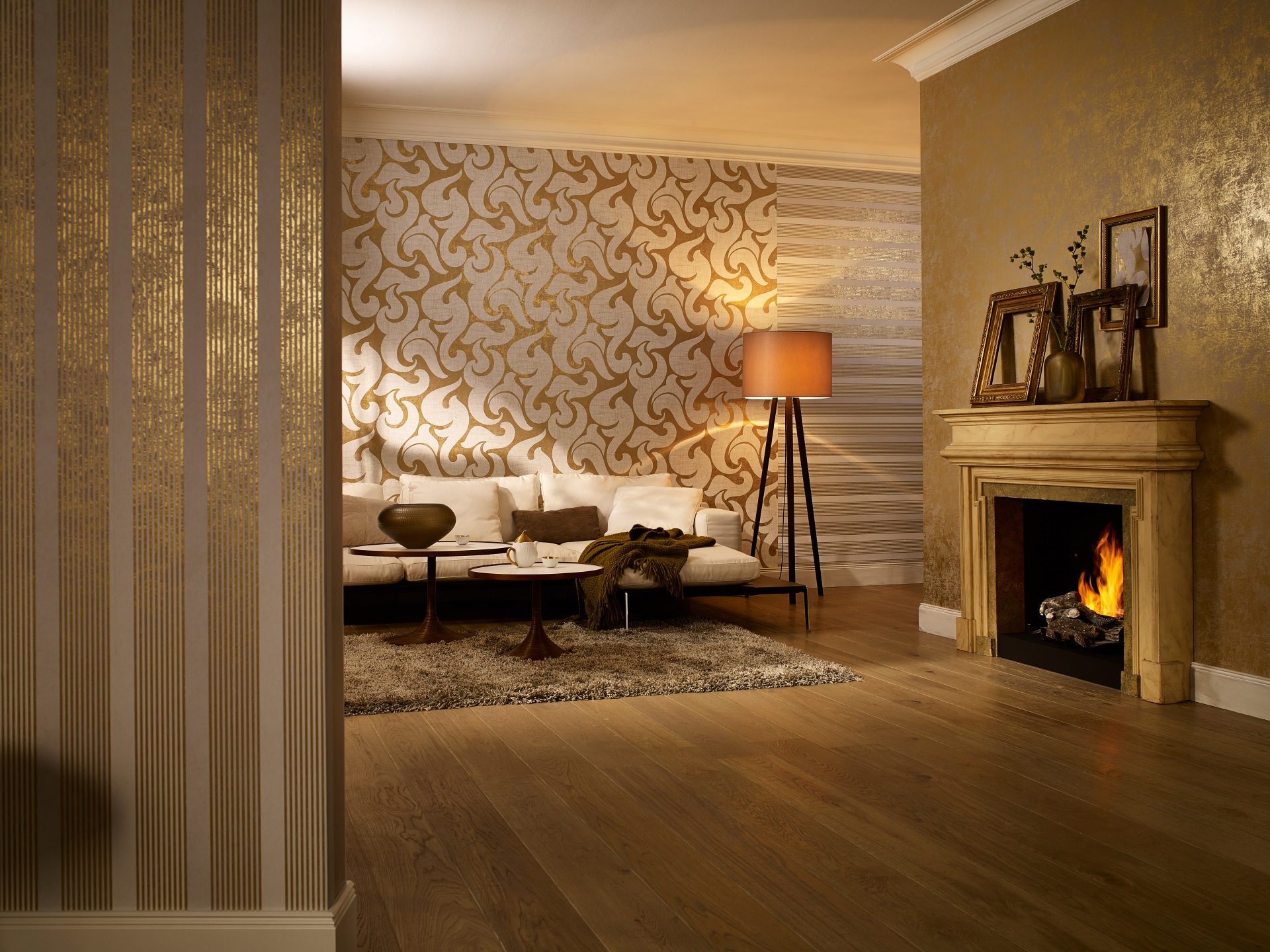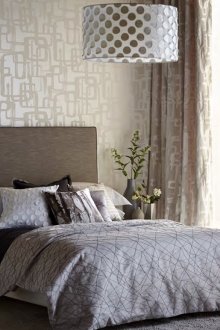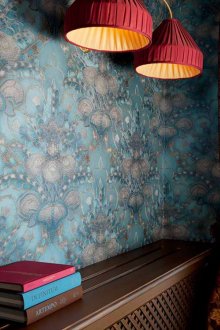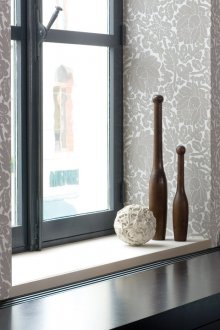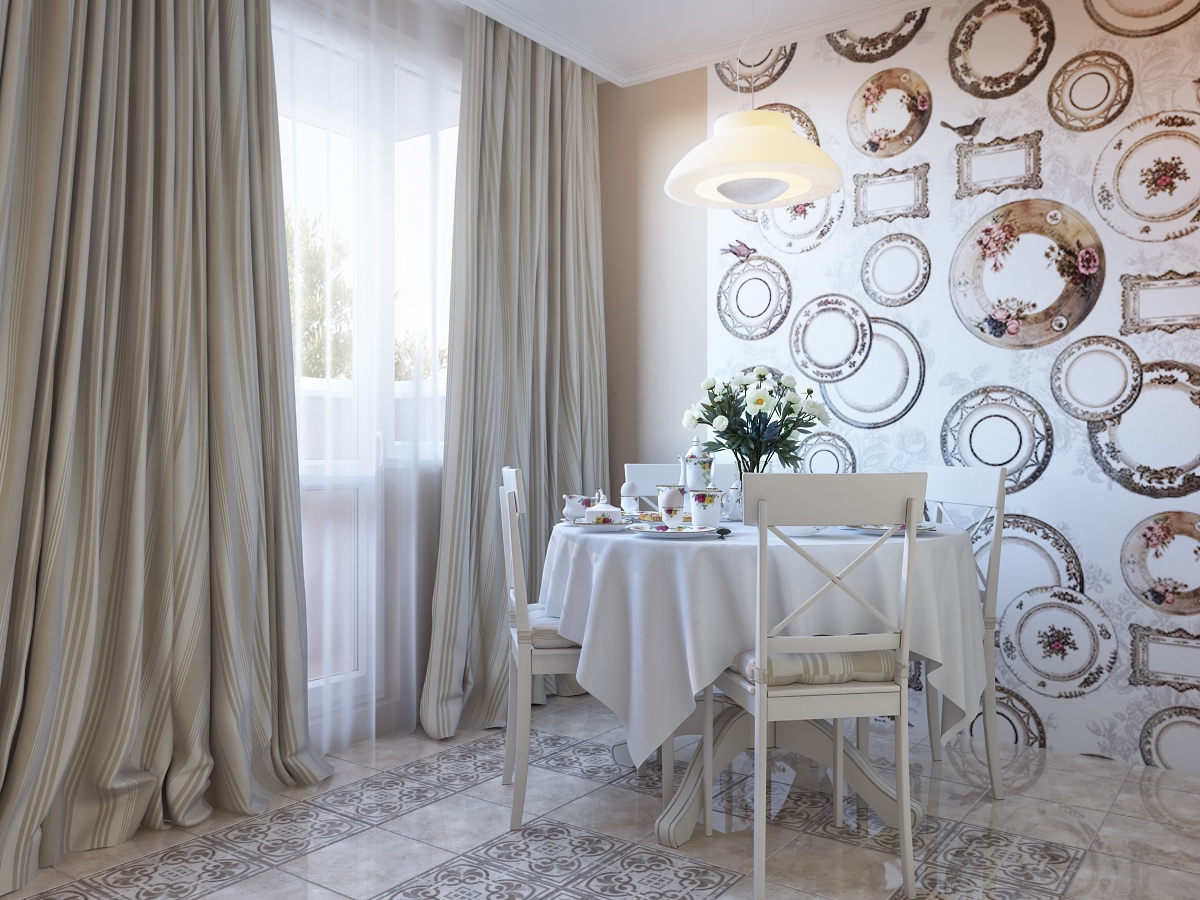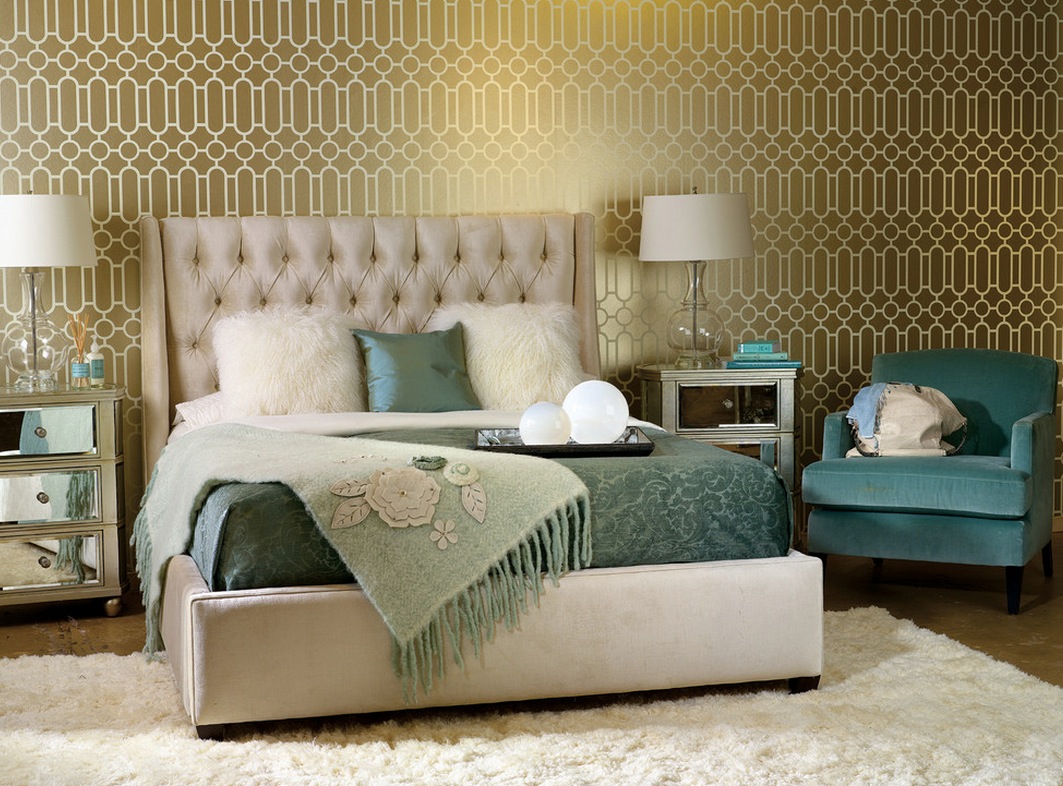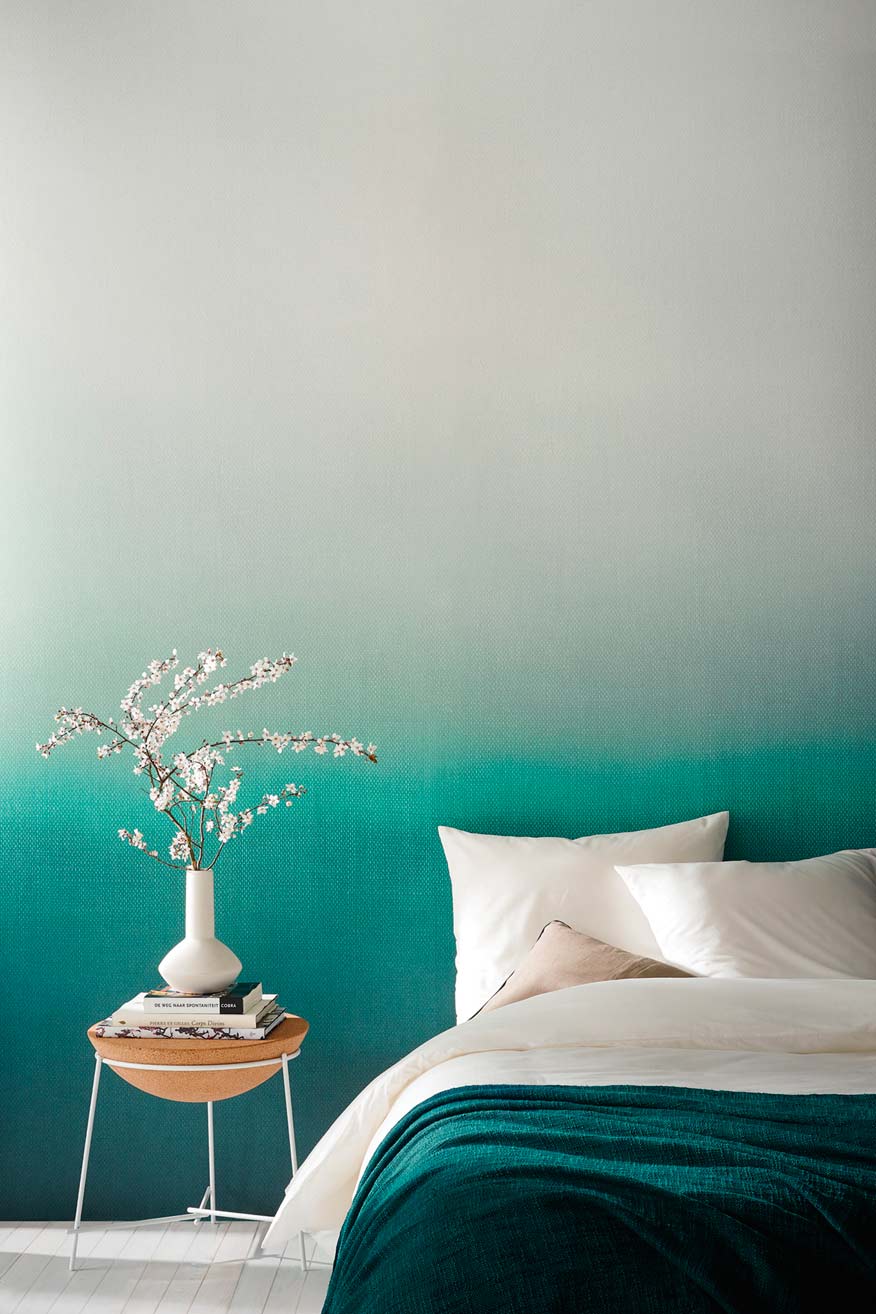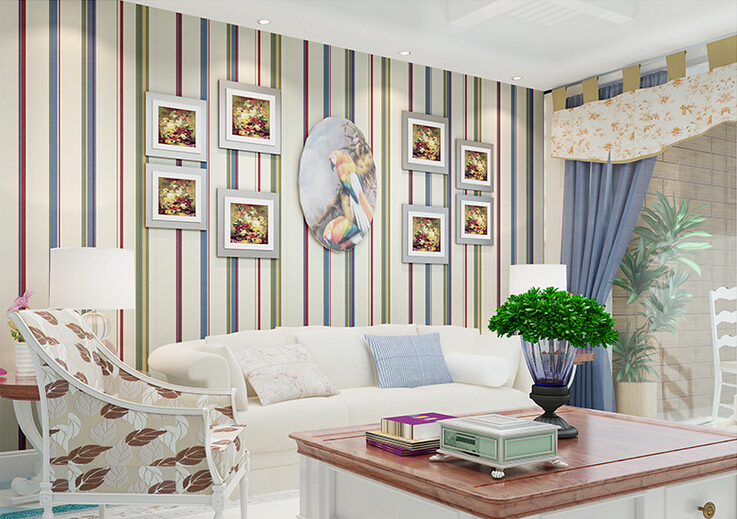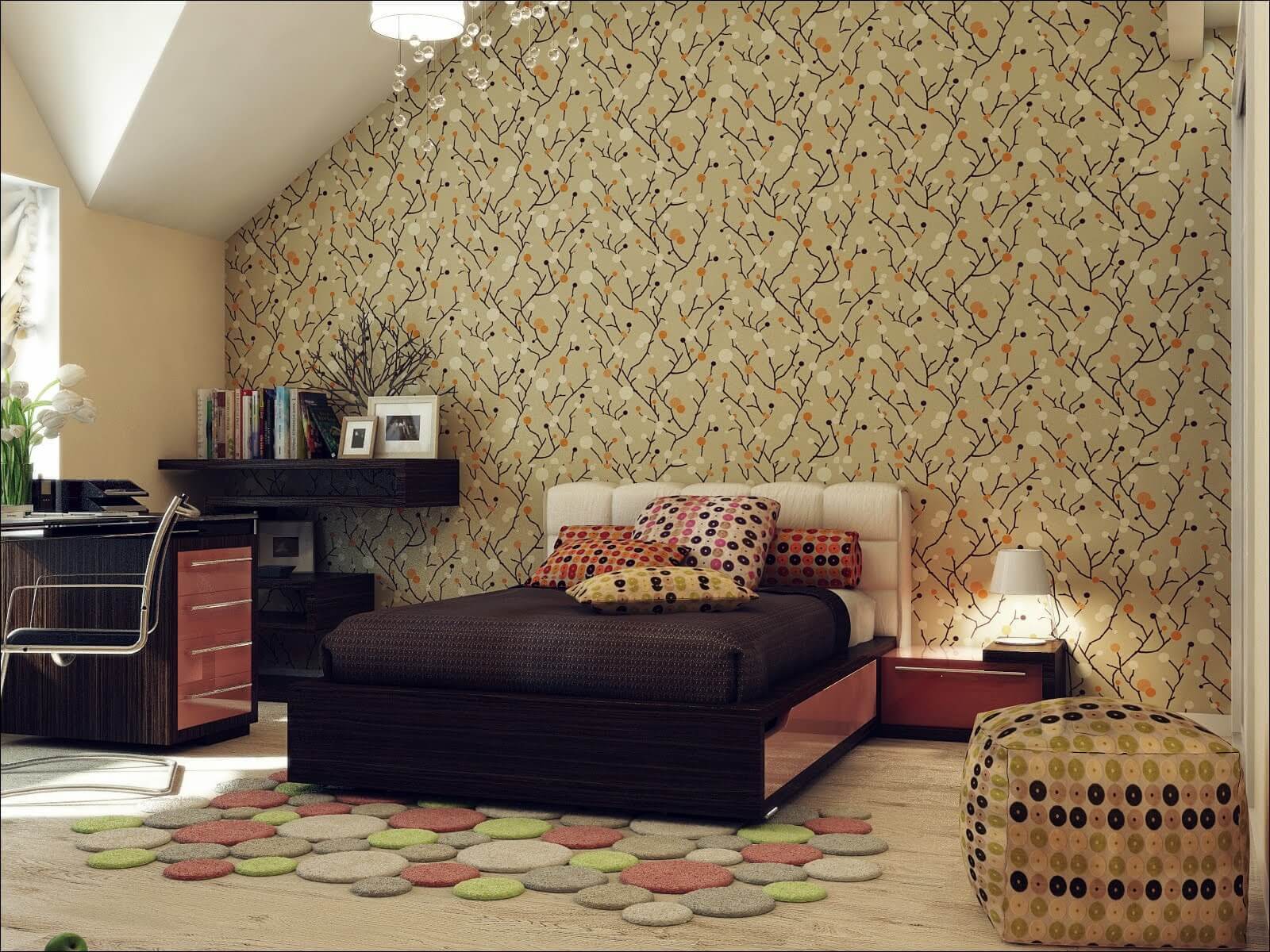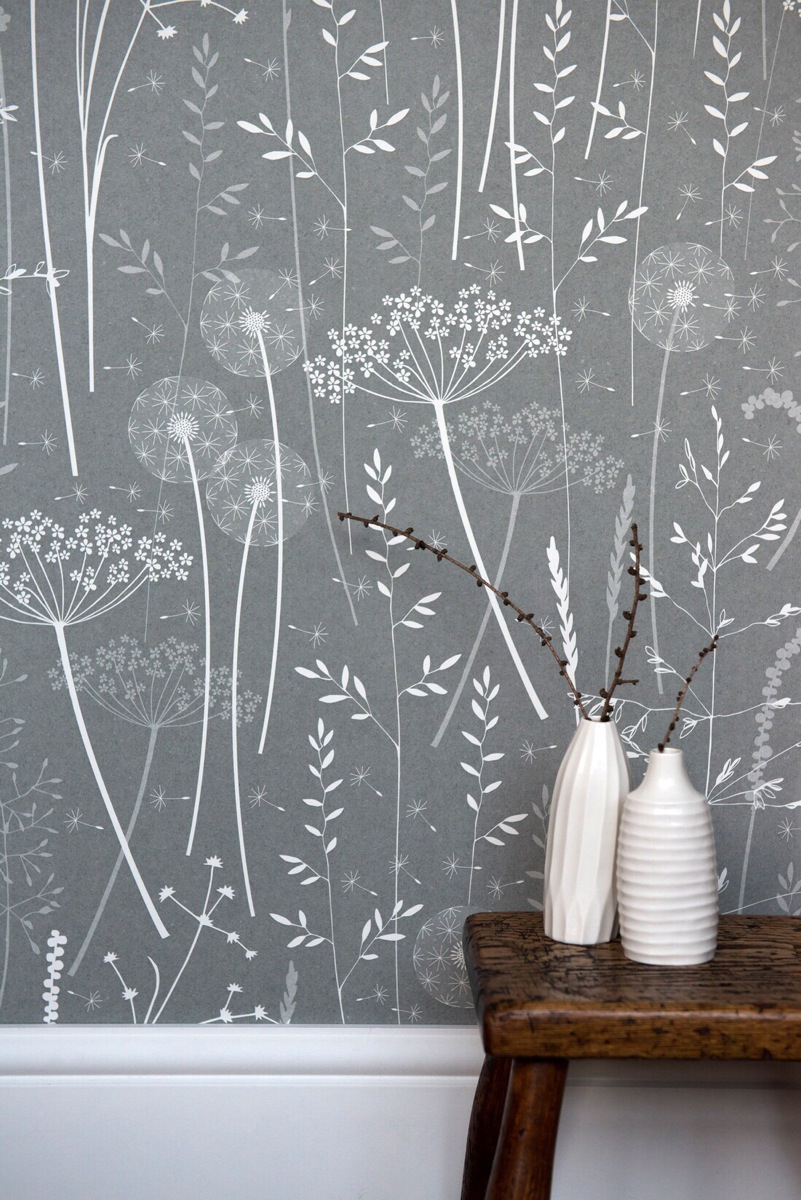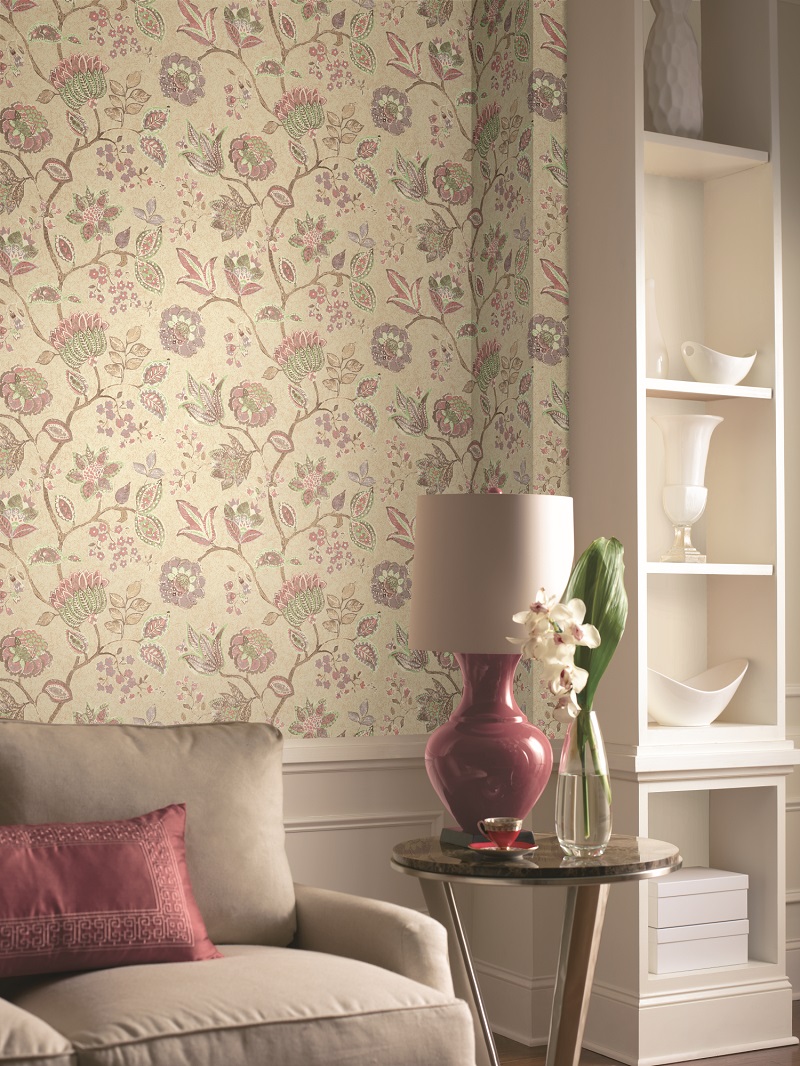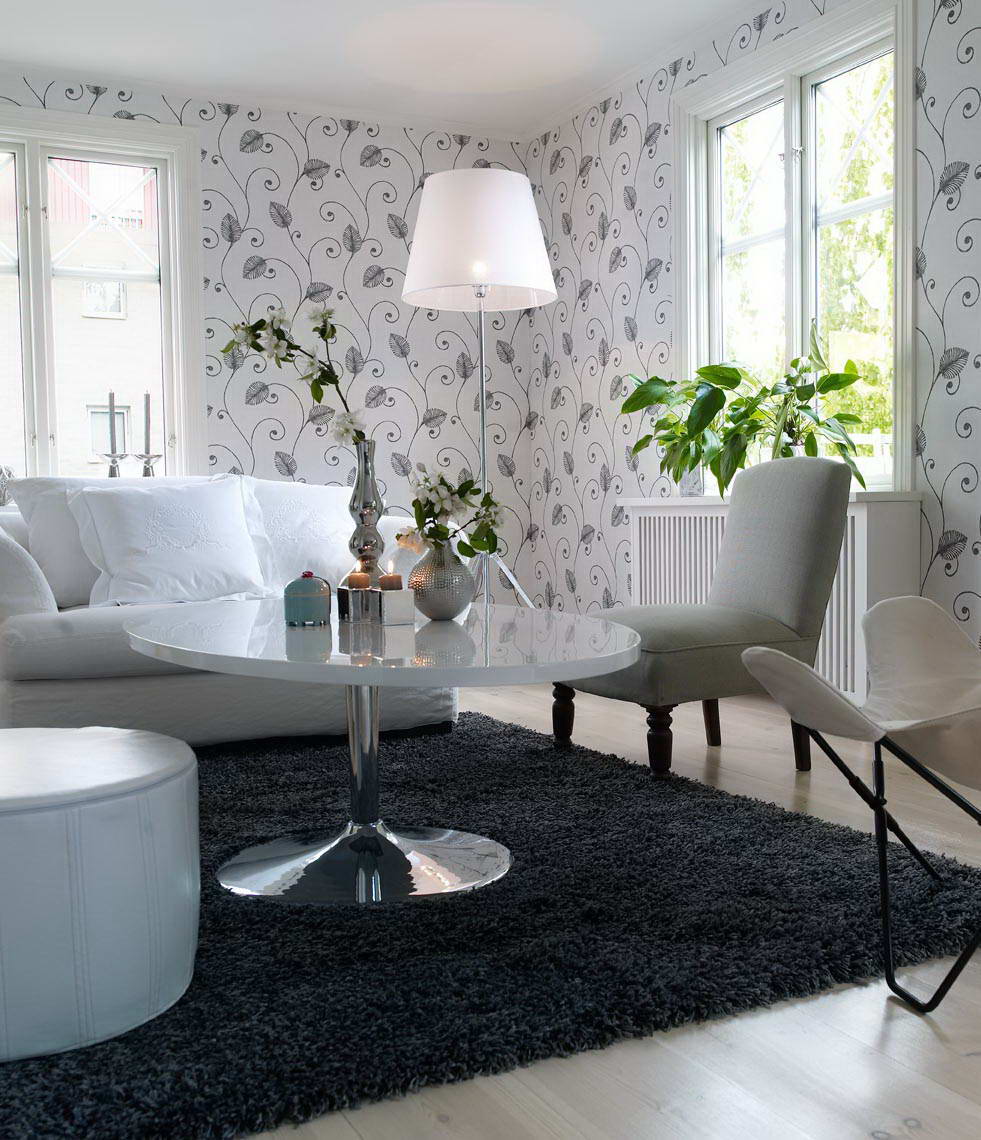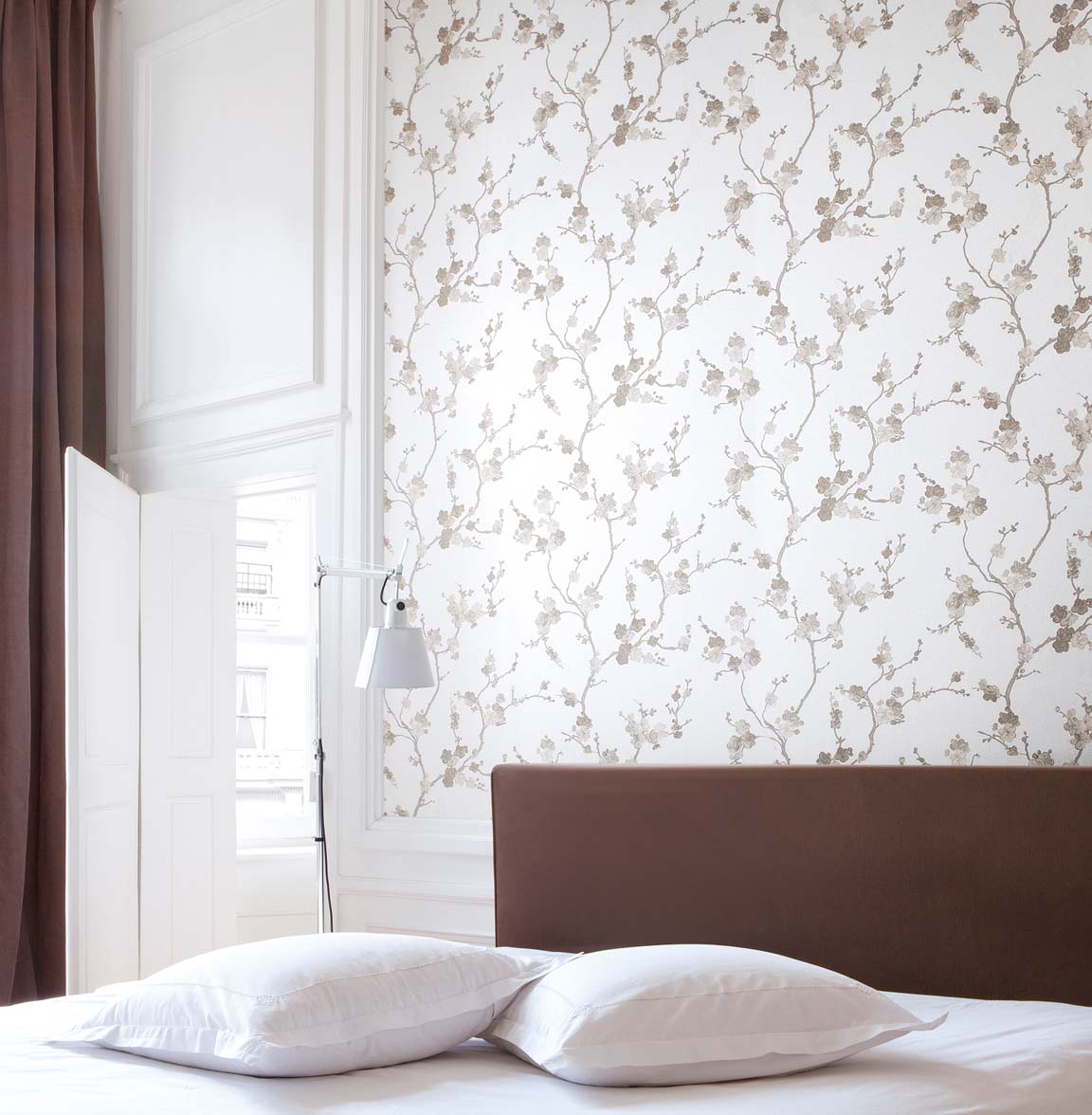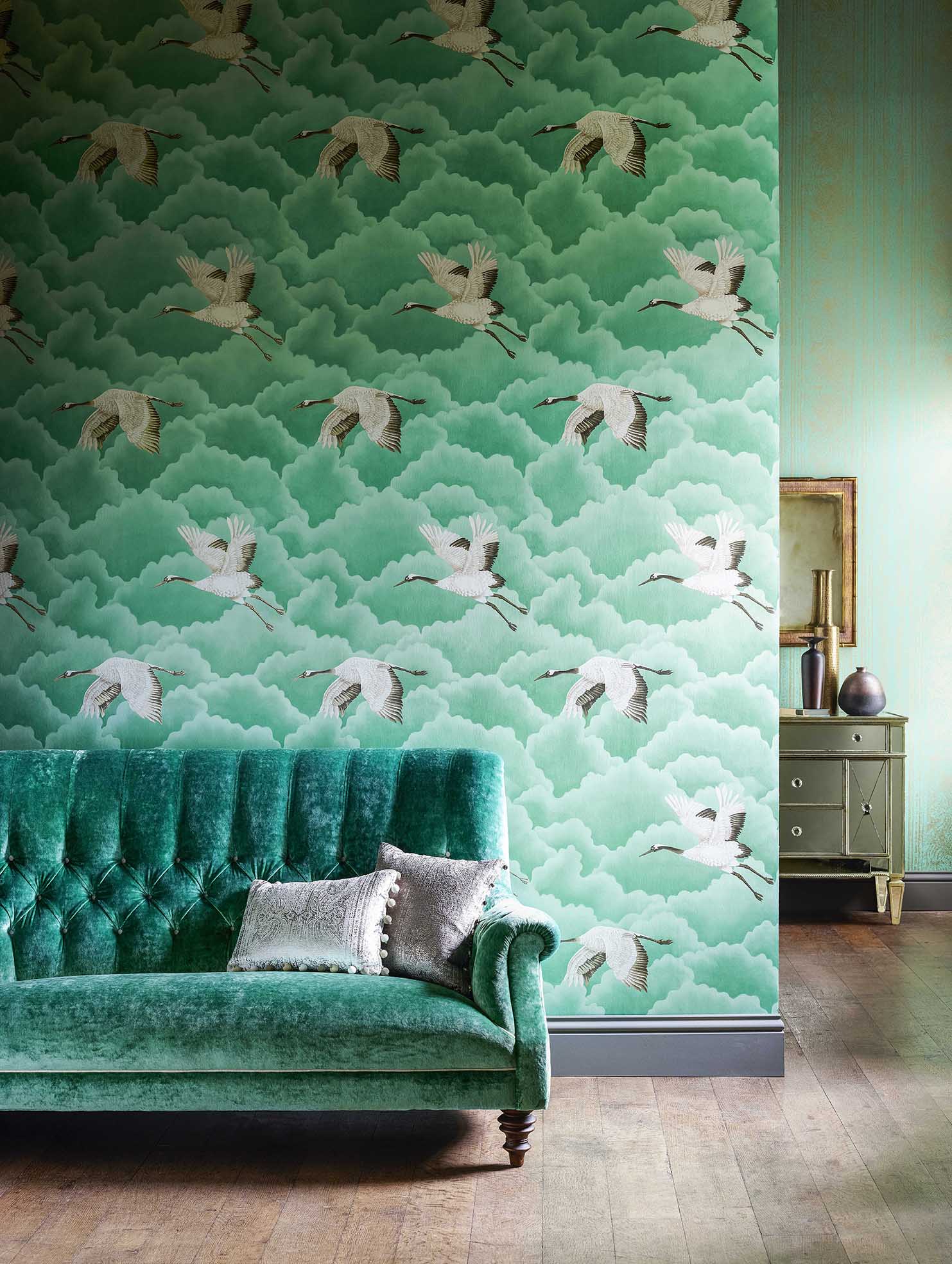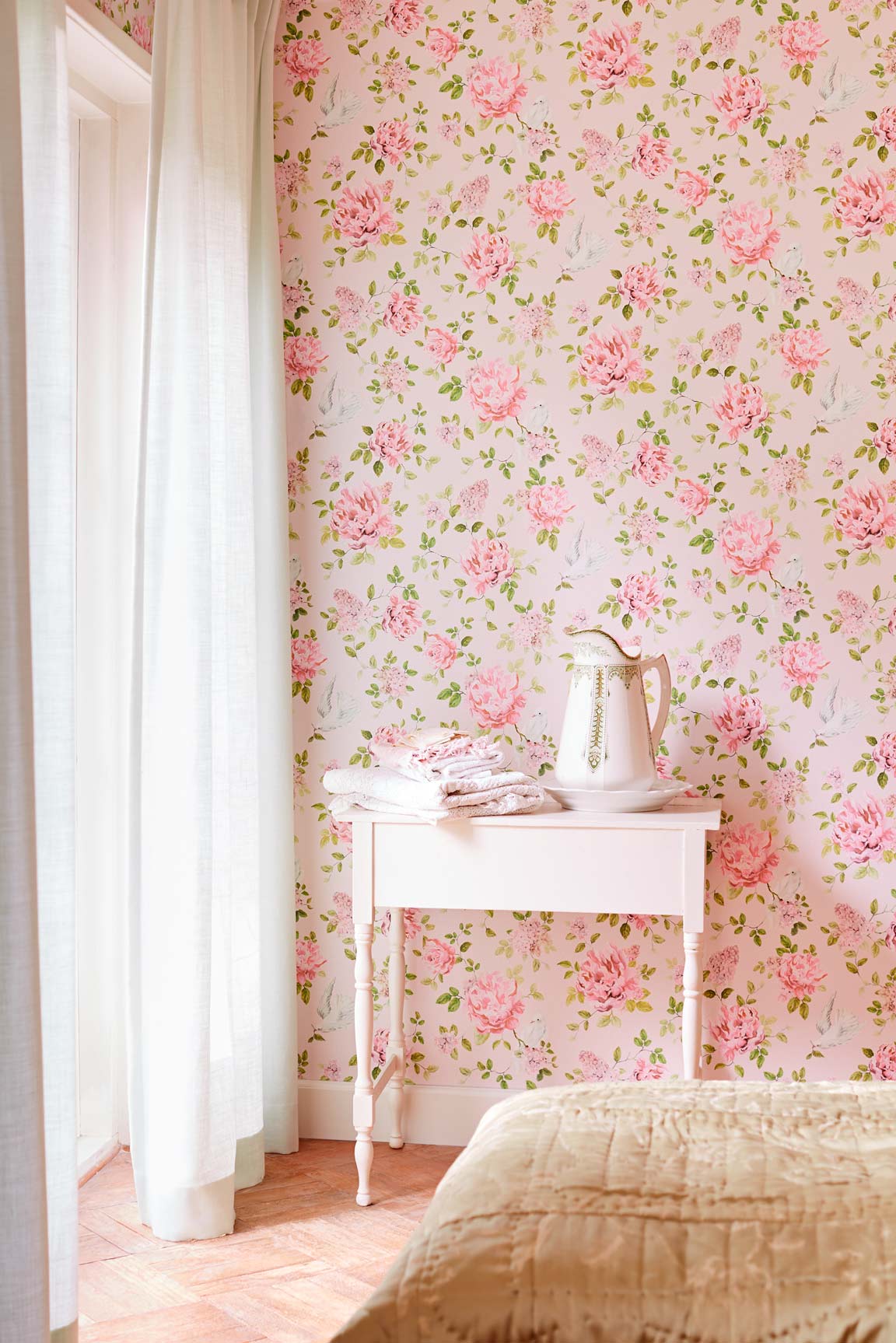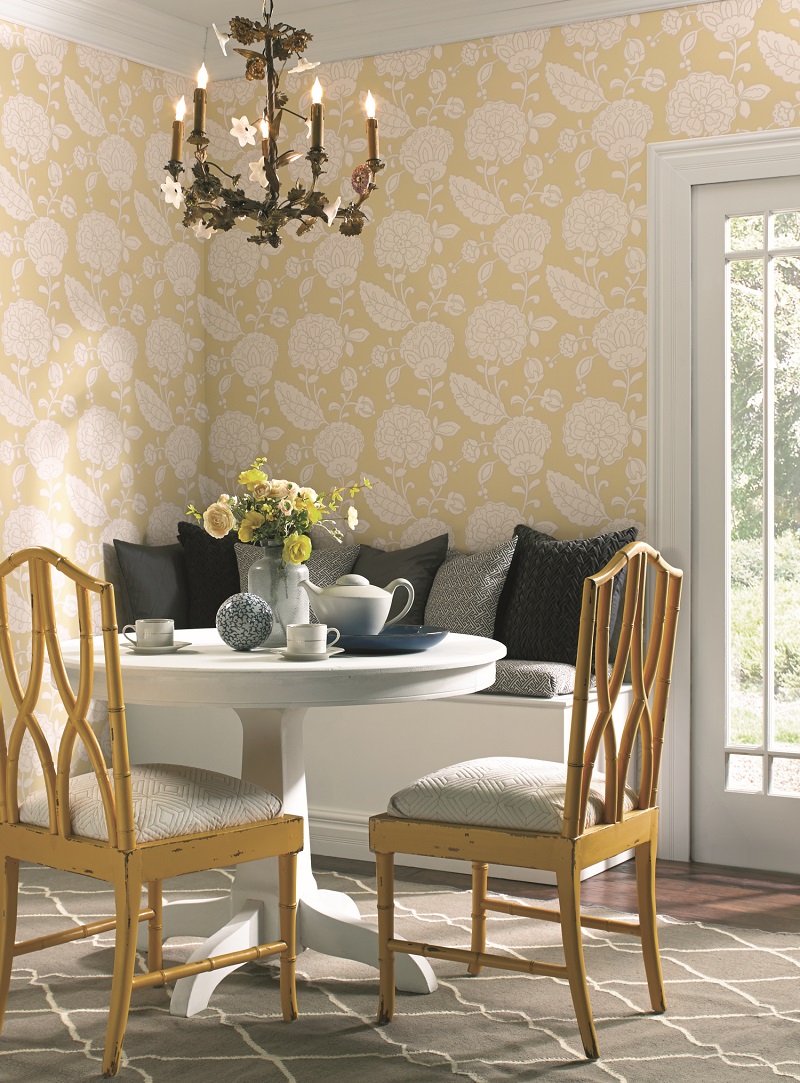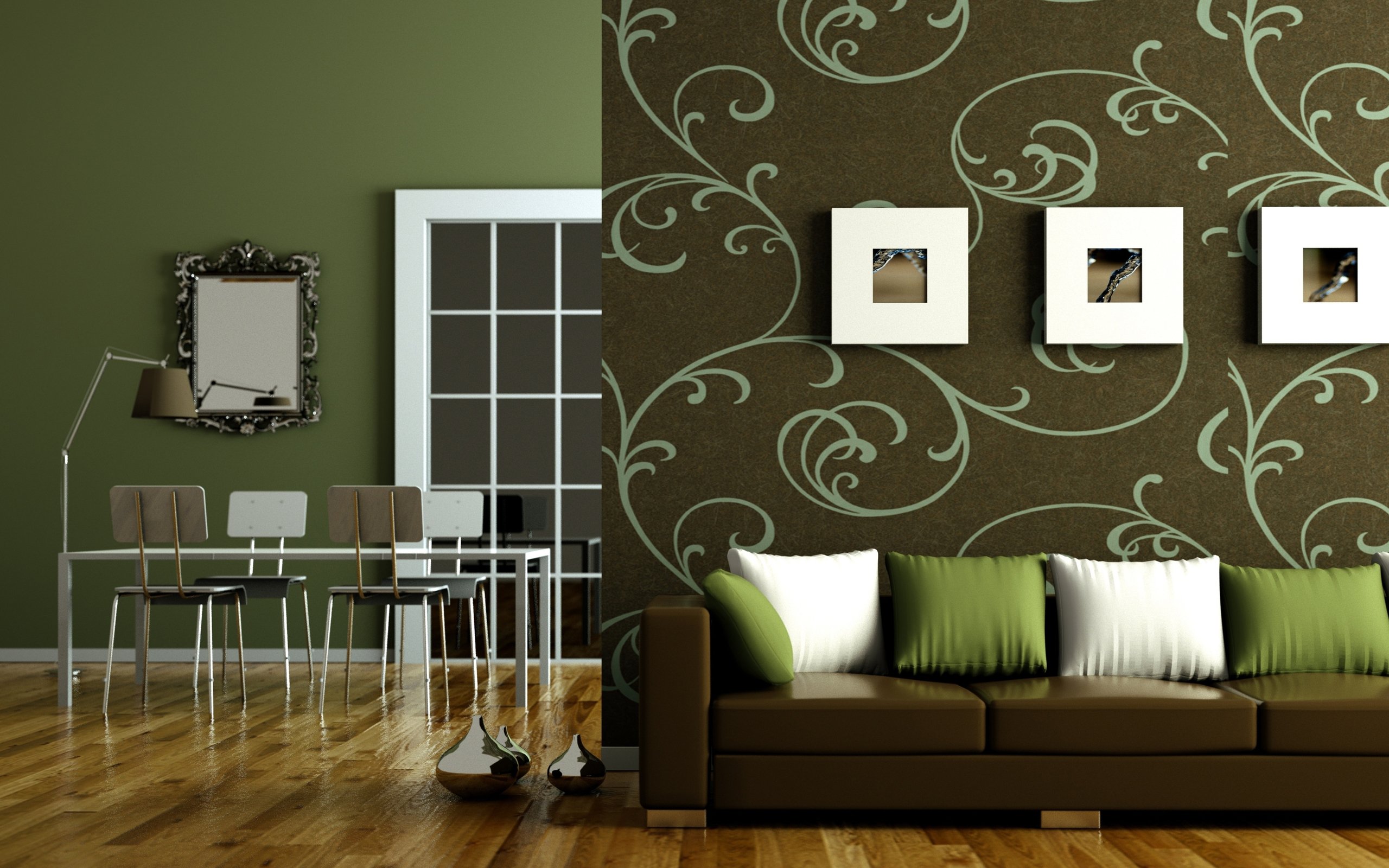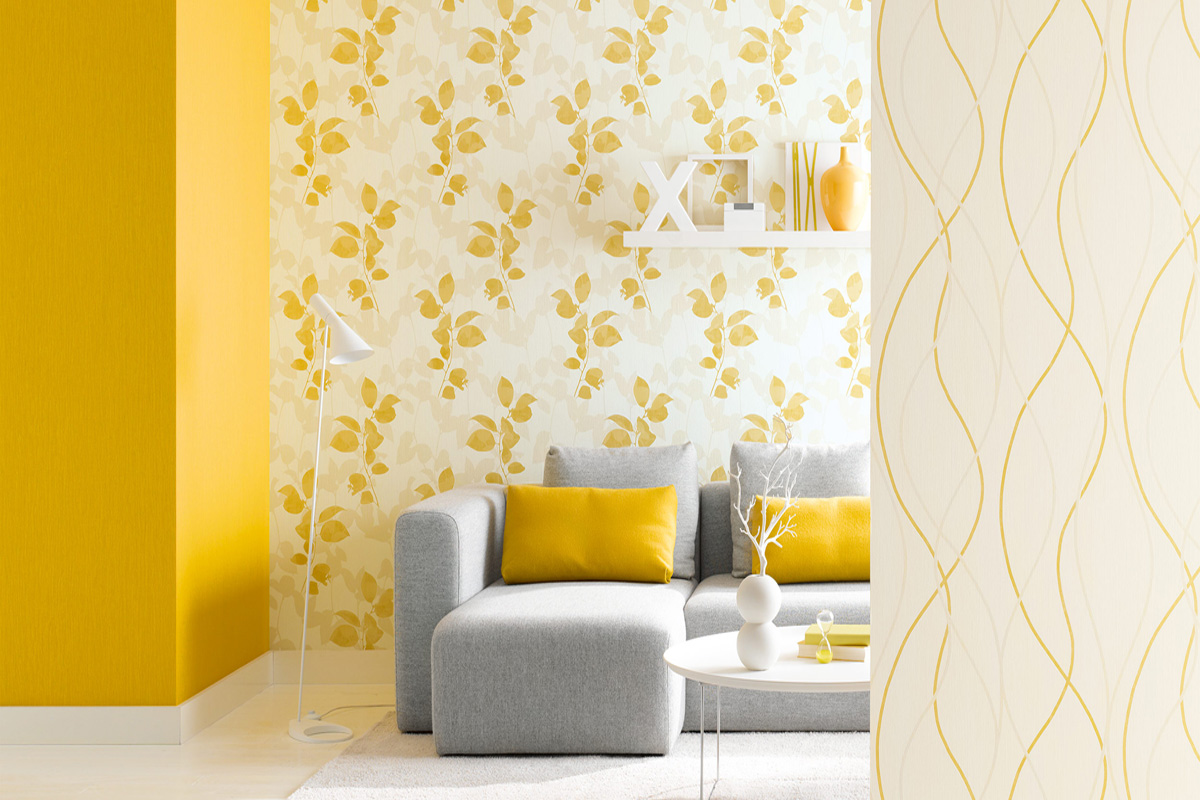Paper wallpapers in the interior: simple, but tasteful (39 photos)
Content
Despite the fact that today paper-based wallpapers are trying to push out from the market, they continue to be in great demand among the population. Like two hundred years ago, they are the most popular way of decorating walls. Moreover, this does not depend on the status or financial situation of the buyer. What is the secret of their popularity?
The advantages of paper wallpaper
When deciding on the purchase of materials for decoration, you have to weigh all the pros and cons. And I must say that in a wide variety represented by the construction market, paper wallpapers for walls win more often than others.
The advantages of paper wallpaper:
- A rich assortment, and this greatly facilitates the choice of the desired color, the desired pattern or a certain tonality.
- Paper-based wallpapers are one of the most environmentally friendly materials (natural raw materials are used in the production, and the glue needed to work with them does not contain harmful components).
- This type of material forms a “breathing” coating on the walls, which is another definite plus.
- Ease of use (gluing paper wallpapers is not difficult at all, this does not require special skills).
- Affordable price is another factor that plays a significant role in the selection.
The disadvantages of paper wallpaper
Such an impressive list of advantages does not mean at all that paper-based wallpapers do not have their drawbacks. And this list looks like this:
- Lack of moisture resistance (ordinary paper wallpapers are not used in rooms with a high level of humidity).
- The fragility of the material, since after 10 years they lose their original color and, accordingly, their previous attractiveness.
- Low strength and susceptibility to abrasion.
Despite the shortcomings, their popularity does not subside, and paper wallpapers in the interior of city apartments and private houses do not give up their leading positions.
In addition, the choice of paper wallpaper in the modern building materials market impresses with its diversity.
Varieties
Types of paper wallpaper are initially divided into: single-layer and multi-layer. The former are often called "simplex" (translated from Latin it sounds like "simple") - this is the most common form.
Since the composition of the wallpaper is completely natural, the canvas perfectly passes air, which allows the walls to "breathe" and eliminates the formation of mold or fungus. These single-ply paper wallpapers are great for decorating walls in dry rooms.
But the most reliable are duplex or two-layer paper wallpapers. They are stronger than the first due to the double layer. This material has excellent sound absorbing and heat insulating properties. But this is not all his advantage! The pattern on these wallpapers is applied with high-quality dyes, and the top layer is embossed.
Beautiful, embossed, duplex wallpapers are very popular among buyers, since during work they do not tear and almost do not stretch. Their operating time is longer than that of simple, single-layer wallpapers.
Foam wallpaper
Foam wallpapers are also paper-based wallpapers.Production is similar to the manufacture of duplex wallpapers, but after joining the two layers and embossing, a special foaming paint is applied. This forms an uneven texture. Such two-layer wallpapers help to hide flaws and irregularities on the surface of the walls, as they are quite dense and embossed.
The positive features of paper wallpapers of this kind are their resistance to moisture and abrasion. And since the components of acrylic are applied to the foam specifically, then air circulates perfectly through the canvas.
Vinyl wallpapers
Also made on the basis of paper. They owe their name to a polyvinyl chloride film applied to the surface (this makes the material stronger). They have a long service life, are non-toxic and resistant to wet environments.
Non-woven wallpaper
Non-woven paper wallpapers have a wide range of positive qualities. The surface can be any: completely smooth or embossed. Flizelin (pressed cellulosic material) is responsible for their strength. Its structure allows it to avoid deformation during wetting and drying.
And one more important advantage of non-woven wallpaper: they are painted, more than once! Some brands produce wallpapers that can withstand up to ten colors. For many, this is the way out: I pasted wallpaper once, and you can change the interior of an apartment or private house a couple of times a year.
DIY repair, or how to glue paper wallpapers
If you have planned the repair of "one day", then paper thin wallpaper can be glued on top of the old ones. But remember that everything that is done in haste is not of good quality.
It is better to approach this issue with knowledge of the matter. How to glue wallpaper correctly? The process is not as complicated as it might seem. The main thing is accuracy.
Wall preparation
The preparatory part also consists of several stages:
- Removing past coatings that require repair (old wallpaper, peeling paint or whitewashing, etc.).
- Primer.
- Plastering or repairing cracks will help to cover the unevenness of the walls and your paper wallpaper in the interior will look great on a flat surface.
- Putty will help to obtain a smooth base and protect the wall material from stains. This is especially true of the moment when thin wallpaper is used for repairs in the apartment, which absorb moisture well.
- The primer is the final phase (it will remove dust and reduce absorption).
Tools and materials
Before you glue paper wallpaper, you need to prepare the most necessary. And the main assistant is glue. Do not be tempted by the cheapest, if you do not want the seams to dry after drying.
In addition to wallpaper and glue you will need: PVA glue, wide and narrow brushes, deep dishes for kneading glue, a pencil, scissors (only sharp), a level, tape measure or tape, a soft cloth and sponge, a brush for smoothing wallpaper or a plastic (silicone) spatula .
Work order
They always start from the corner (striped wallpaper requires close attention, since the slightest mistake will give a slightly unbalanced distortion).
- Wallpaper cut to length. Exceptional attention is paid to those species where the pattern requires combination.
- The glue is prepared according to the instructions. Then it is applied to the wallpaper very carefully, especially working on the edges of the sheets. After a few minutes it is absorbed (do not apply it more than two wallpaper strips).
- It is recommended to work out the corners and openings with PVA glue (it will not be superfluous to smear the seams on the wallpaper).
- Next, the sheets are applied to the mark on the wall and glued.
- First, smooth with a soft cloth, then with a spatula or brush. Be careful! Especially if you have thin and smooth paper wallpapers in your hands.
- At the end, measure the width of the remaining section. This must be done in order to cut the last sheet before applying glue.
During operation, make sure that the doors and windows in the room are closed to avoid drafts (before the material dries on the walls).
Paper wallpapers in the interior: color schemes of residential premises
Modern paper wallpapers delight with their variety of colors and textures. With ease, you can choose what you want, regardless of the complexity of design ideas or your own fantasies: not only walls are glued with wallpaper, but also furniture, door leafs, and interesting ceiling finishes.
Consider the most familiar option - paper wallpaper in the interior of private homes.
Hallway
It is logical to start with the hallway, because it is she who is considered the “face” of the house. Textured coatings imitating brick, stone, plaster, textile or tile are very good for this room. It is important that they are not too "motley" and were designed in a calm color scheme. It is undesirable to use very light materials. For example, white paper wallpapers too quickly lose their original appearance in the hallway.
Paper wallpaper for the kitchen
In this room the humidity is often increased and it is more appropriate to use a moisture resistant type. Such material allows you to maintain cleanliness and order in the kitchen.
But this does not mean at all that a simple paper version is not suitable in kitchen facilities. If you liked the yellow paper wallpaper, which is not moisture resistant, then they can paste over the dining area, remote from the work.
Living room
Paper wallpapers in the living room are selected taking into account the illumination of the room. If the room is sunny, then materials of muted colors or plain pastel-colored paper wallpapers are suitable for wall decoration. A dark room will visually become “filled with light” if you use light wallpaper with a discreet pattern in the repair.
Paper wallpaper in the interior of the living room will help to diversify the atmosphere, if you execute the design in different colors. The accent wall looks very beautiful, on which the owners want to pay attention, highlighting it with a bright color, texture or pattern.
Bedroom
But the bright wallpaper for this room is a wrong reception. The bedroom is obliged to have a rest and here a soft palette of natural colors is especially good. Appropriate green paper wallpaper in the interior of the bedroom, but it should be a pleasant and light range.
Children's room
It is a mistake to assume that the child’s room is waiting for bright colors. Especially when it comes to school age. If the child wished blue paper wallpapers in white daisies, then you can go towards him, having pasted over them a resting place. The working area should not have “flashy” colors, so as not to distract the child from classes.
Well and the last: the measure in all gives good results, do not rush to buy everything that pleases the eye in the store of finishing materials.
